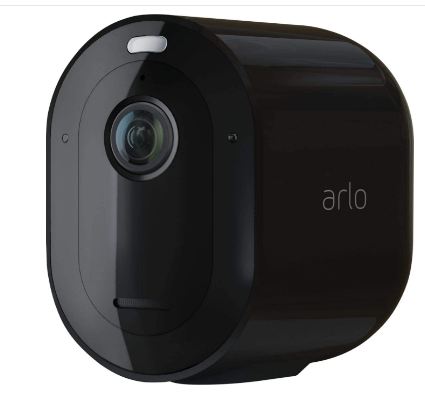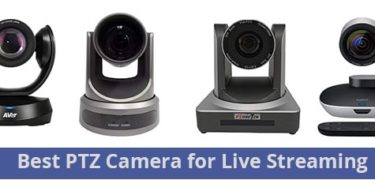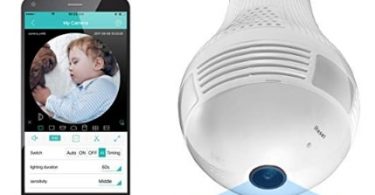As an Amazon Associate, I can earn from qualifying purchases. Learn more.
As the story of “Smart Homes” and the Internet of Things (IoT) become popular, more and more people continue to embrace Wi-Fi cameras as well. And not just homeowners, but by those running small and big businesses.
Even so, a significant percentage are still unaware of the importance of this piece of tech and still watching their properties the old-school way- without means. Others, on the other hand, are skeptical about using them for personal reasons and from the few drawbacks that revolve around it.
The major of these issues is about reliability, in which case many are concerned about the time the internet is down. But for those who know how much data does a wifi security camera use, the internet happens to be the least of their worries. This is so as they already know the number of cameras their modem/ router can handle and on which kind of settings.
Wifi Cameras vs Wired Camera Systems
If you don’t care about any of the things from critics rather the security of your household, a Wi-Fi camera has everything to appreciate. If it’s your home, the system allows you to see first-hand details on everything happening on your compound while even thousands of miles away.
Of course, even the latest wired security camera systems also support the remote viewing feature, but each has its characteristics. As a matter of fact, the strengths of either are the weaknesses of the other.
Take for example installation; a Wi-Fi wireless security camera system is quick and straightforward to set up than its counterpart. On the other hand, a wired security camera system with DVR is more cost-effective to run as you necessarily don’t need to pay for cloud subscriptions.
That said, though, both types are great for security if you learn how to be with one. But if you already have smart home integration (like Alexa or Google Assistant) in your home, a wifi camera system might be a worthwhile option.
Does A Wi-Fi Camera Always Need Internet To Work?
That’s the thing. A Wi-Fi CCTV does not need to have the internet to continue working- though not all of them. But that’ll be a sacrifice you need to make as most of the crucial features of the device need an active internet connection.
For instance, remote viewing and two-way talk are only possible if both your viewing device and camera system are online. If either is offline, nothing you access remotely, not even the motion- or sound-activated push alerts. But when both devices are online, you can view, listen, and even talk back through your smart device regardless of where you’re.
Meanwhile, some CCTV models do have a built-in slot or SD card slots that make it possible to save events locally. So, with the internet or not, you can still have the latest recordings of whoever was in your yard while you were away.
Furthermore, the local storage can help lower the bandwidth consumption of your Wi-Fi and to a great extent.
This now brings us to our main subject of the day on…
How Much Data Does A WiFi Security Camera Use?
Before you can know how much data your IP camera use, the first thing you should know is how it sends over data.
Regardless, there’s nothing so complicated about it. The performance of a wifi camera is all about bandwidth, which is the maximum rate of data transfer across the internet connection. It’s usually expressed as bit per second (b/s), and if the data transfer is successful, the average rate used is what we now call bandwidth consumption.
Usually, wifi security cameras use the internet in two different ways- via download bandwidth and upload bandwidth.
Just as the name, upload bandwidth is the data rate when a camera like Wyze Cam 1080p HD uploads a video to the cloud.
On its end, the download bandwidth is the amount of data used when watching your camera footage in the supported app or client software. Furthermore, the camera tends to use a small amount of it (download bandwidth) to get software updates and other information from the security provider.
As for the upload and download bandwidth consumption, there’s no fixed amount to either state. Various camera types and brands have different features, with some having the greatest impact on the amount of data consumed.
These factors include:
-
Camera’s resolution
Simply, the higher resolution of a camera, the richer the quality of the pictures. Hence, allowing you to see every corner of your property clearly and in vivid details.
On the negative, however, the higher quality images and videos recorded tend to consume more data. That’s both while streaming on your viewing device (smartphone, tablet, laptop, and PC) or when uploading to the cloud storage.
-
Video Compression Format
By definition, video compression is a process by which the camera resets the recording settings to make the video smaller. Up to now, H.264 is like the standard video codec for surveillance cameras, but some brands are using advanced H.26+ and H.265.
In any case, a low video compression format certainly has larger images and video files. So, it’ll consume more upload and download bandwidth.
-
Frame rate per seconds (FPS)
This is the frequency at which consecutive images (or else frames) appear on a display. It’s also a very crucial factor when it comes to the footage from a security camera. In which case more FPS delivers clearer and consistent videos.
Even so, the frame rate is also directly proportional to the bandwidth consumption. So, the higher it will be, the more data the videos consume while downloading or uploading.
-
Supported Features
Again, various CCTV surveillance cameras usually pack different features and capabilities. Some have just the basics like standard recording and (perhaps) the software-based motion sensor. Others have more sophisticated features, including two-way audio, siren, advanced motion detection, and even smart AI like facial recognition.
In this case, you’ll notice many activated features will consume more data than those cameras with less. This is just like when you try multitasking your laptop with many open windows or browser tabs, which will cause it to freeze.
-
Pictures/ video upload Frequency
This one now answers the question of whether you upload recordings to the cloud 24/7 or short motion/ sound activated clips. If it’s the former (continuous video recording), your camera will consume more data, just as it would have been taking much space of your local drive. The same will apply if your CCTV uploads activity-triggered clips that are longer.
-
Quantity of Cameras
One of the best ways to ensure maximum security of your property is by having extra eyes on different corners. If it’s at home, you can mount the camera on all the key spots, including the front door, back door, garage, kids room, and pool area (if you have one).
If using Wi-Fi security cameras, however, streaming many of them simultaneously is a pretty hefty task. Hence, exhausting your bandwidth and data consumption
-
Scene Activity
This is also pretty much straightforward just like when using many cameras at a go, but now in terms of activity level.
If your security camera is in a high traffic spot, it means all the features it has will be active for long periods. So, the captured video will be pretty heavy on the data due to aspects like movements, sound, and even image details.
A good example is a 10-second clip of a white wall, which will require more data than a 10-second clip of a busy compound/ room.
Wi-Fi Camera Bandwidth Calculation formula
In case you fancy playing with digits, you can use the following formula to calculate the approximate amount of data your security cameras use.
Required Bandwidth (Mbps) =Bitrate (main) x N + Bitrate (sub) x M
** N & M represents the number of wifi cameras for mainstream and sub-stream respectively.**
Example: if your front door camera has a mainstream of 8192 kbps and a sub stream of 512 kbps…
Total Required Bandwidth = 1 x 8192 kbps + 1 x 512 kbps= 8704 Kbps or 8.704Mbps
Please note, the formula is not 100% accurate due to the eight features above. It, however, can give you an insight into the amount to expect.
How Can You Prevent Your Wifi Camera From Using Much Data?
If the internet consumption of your CCTV camera is high, not only will it affect the footage transmission. But also interrupt the performance of other devices on the same network. For a solution, you have to first figure out if the issue is from your end of the service provider.
If it’s from your end, the two main answers are to upgrade your network or else solve some of the issues above. They are:
- Use the proper video resolution
- Consider a higher video compression
- Reduce the frames rate
- Set the camera to record/ upload at intervals
- Use a limited number of cameras
Verdict:
A Wi-Fi security camera no doubt is the easiest means to monitor your home or business joint. The design has an easy setup that doesn’t require professional installation as it’s all about plugging into power and configuring.
Furthermore, the security camera mainly uses the cloud as storage. So, you can remotely view live and past footage from anywhere in the world.
Despite the ease of use and flexibility, however, a Wi-Fi security camera can compromise your other online activities if you’re not watchful. Luckily, the article has covered the various factors that might cause that to happen and several solutions to it.
We hope you found it helpful and you’re now ready to maximize the advantages of your security system and that of your service plan data.
Similar post:




